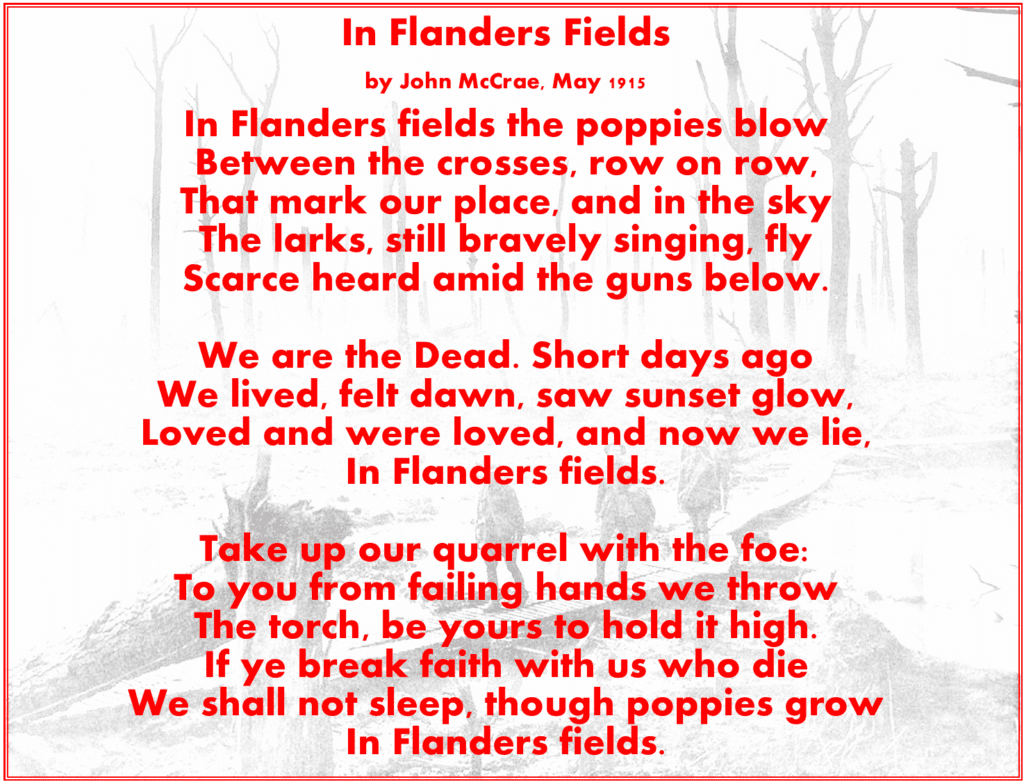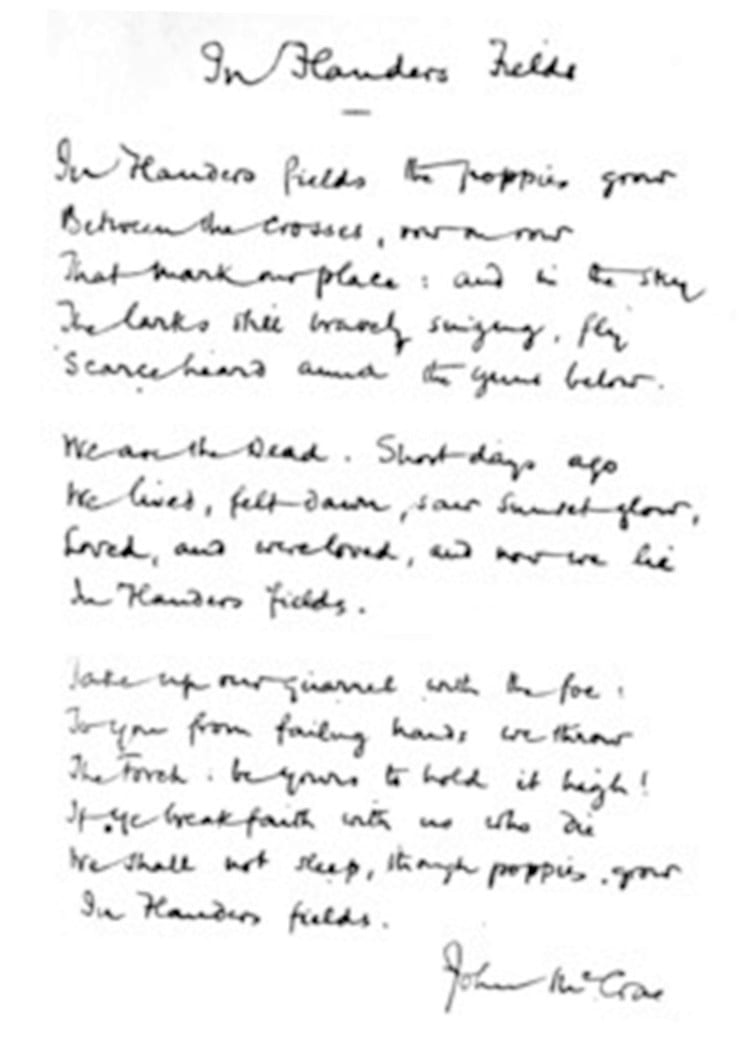
11 November is that the time of the year when, by the wearing of a red poppy, we salute those who have sacrificed their lives in the service of their country. Long known as the corn poppy because it flourishes as a weed in grain fields, the Flanders Poppy grew profusely in the trenches and craters of the war zone. The disturbance of the ground and changed soil content, as a result of military action and burials, the poppy was one of the few plants able to grow in the region.
Common throughout Europe and history as a symbol of blood spilt on battlefields, this same poppy also flowers in Turkey in early spring – as it did in April 1915 when the ANZACs landed at Gallipoli. According to Australia’s official war historian C.E.W.Bean, a valley south of ANZAC beach got its name Poppy Valley, “from the field of brilliant red poppies”.
The modern legend of the red poppy was as a result John McCrae, a poet and physician from Guelph, Ontario. At the age of 41, he enrolled with the Canadian Expeditionary Force following the outbreak of the First World War. He had the option of joining the medical corps because of his profession but he volunteered instead to join a fighting unit as a gunner and medical officer. It was his second tour of duty in the Canadian military; he had previously fought with a volunteer force in the Second Boer War.

McCrae fought in the Second Battle of Ypres in the Flanders region of Belgium, where the German army launched one of the first chemical attack in the history of war. They attacked French positions north of the Canadians with chlorine gas on April 22, 1915 but were unable to break through the Canadian line, which held for over two weeks.
Alexis Helmer, a student of McCrae and a close friend was killed during the battle on May 2. McCrae performed the burial service himself, at which time he noted how Poppies quickly grew around the graves of those who died at Ypres. The next day, he composed the poem while sitting in the back of an ambulance at an Advanced Dressing Station outside Ypres.

An autographed copy of the poem from In Flanders Fields and Other Poems. Unlike that published, McCrae’s handwritten version ends the first line with “grow”. COL McCrae was wounded in May 1918 and was taken to one of the large hospitals on the coast of France.
On the third evening he was wheeled to the balcony of his room to look over the sea towards the cliffs of Dover. The verses were obviously in his mind, for he said to the doctor “tell them, if ye break faith with us who die, we shall not sleep.” That same night COL McCrae died.
Inspired by “In Flanders Fields”, American professor Moina Michael of the American YMCA resolved at the war’s conclusion in 1918 to wear a red poppy year-round to honour the soldiers who had died in the war. She also wrote a poem in response called “We Shall Keep the Faith“.
Michael distributed silk poppies to her peers and campaigned to have them adopted as an official symbol of remembrance by the American Legion. Secretary of the French YMCA, Madame E. Guérin, attended the 1920 convention where the Legion supported Michael’s proposal and she was inspired to sell poppies in her native France to raise money for the war’s orphans. In 1921, Guérin sent poppy sellers to London ahead of Armistice Day, attracting the attention of Field Marsha Douglas Haig. A co-founder of The Royal British Legion, Haig supported and encouraged the sale. The practice quickly spread throughout the British Empire.
The wearing of poppies in the days leading up to Remembrance Day remains popular in many areas of the Commonwealth of Nations, particularly Great Britain, Canada and South Africa and in the days leading up to ANZAC Day in Australia and New Zealand.
The Returned Sailors and Soldiers of Australia join their comrades of the British Empire and Allied Countries in asking people of Australia to wear the poppy; firstly in memory of our sacred dead who rest in Flanders’ Fields; secondly to keep alive the memories of the sacred cause for which they laid down their lives; and thirdly as a bond of esteem and affection between the soldiers of all Allied nations and in respect for France, our common battle ground.
The League bought one million poppies from France to sell on 11 November 1921 at one shilling each. Five pence per poppy was to go back to France towards a fund for the children of the devastated areas of France, with sixpence per poppy being retained by each State branch and one penny going to the national office. The League kept up this practice for several years, and of course kept the tradition of selling poppies to mark 11 November and raise money for welfare work, even when the poppies were no longer obtained from France.
The modern story of the poppy is, of course, no legend. It is from the pages of our history. Source: Australian War Memorial, RSLWA and Wikipedia.
